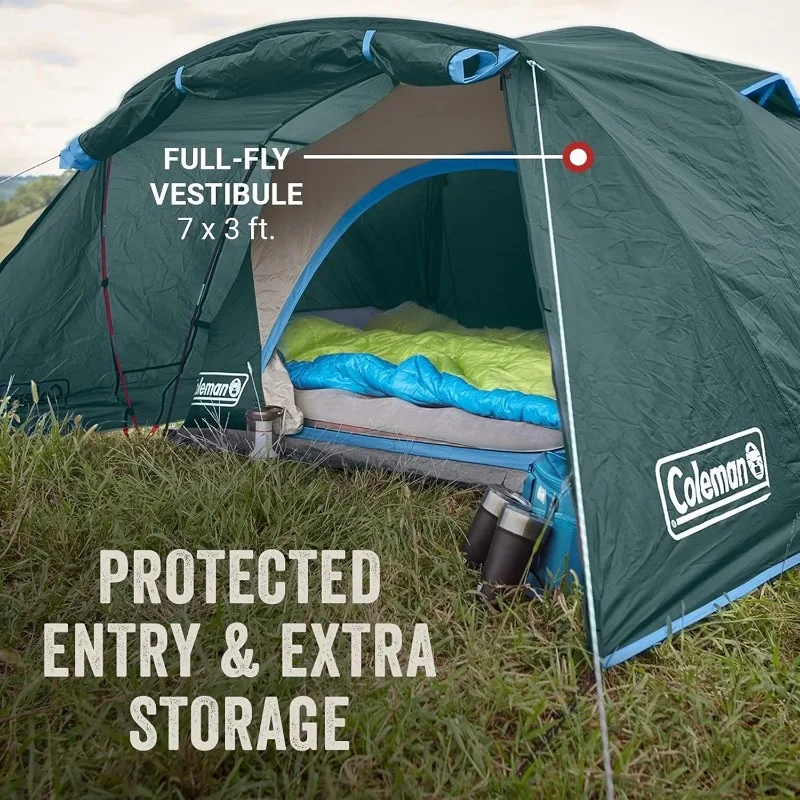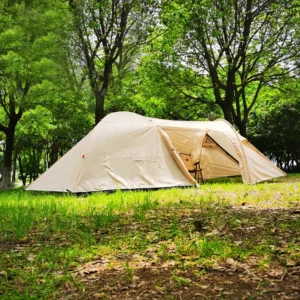The Dome Tent Defined: A Comprehensive Overview
A dome tent is a self-supporting shelter characterized by a curved, often hemispherical shape that resembles—as the name suggests—a dome. At its core, the dome tent structure relies on flexible poles that cross over each other to create tension with the fabric covering, forming a sturdy and resilient shelter. This elegant engineering solution creates a freestanding structure that doesn’t rely on stakes or guy lines for its basic shape, though these are typically used to secure the tent against wind.
The modern dome tent’s design draws inspiration from geodesic dome principles developed by architect Buckminster Fuller in the mid-20th century. His work on creating strong structures using interconnected triangles revolutionized tent design, particularly for outdoor recreation. Before dome tents became popular in the 1970s and 1980s, most campers relied on A-frame or wall tents that required extensive guy lines and offered less stability in adverse conditions.
Key characteristics that define dome tents include:
- Self-supporting structure requiring minimal staking
- Curved surfaces that shed wind, rain, and snow efficiently
- Flexible poles that provide both rigidity and adaptability
- Greater interior height compared to many traditional tent designs
- Excellent strength-to-weight ratio
Within the broader context of tent structures, dome tents sit between ultra-lightweight minimalist shelters and larger, more complex base camp or family tents. Their versatility and the ultimate guide to dome tents for two people shows why they’ve become the most popular choice for many outdoor enthusiasts.
The Engineering Behind Dome Tents: How They Work
The genius of dome tent design lies in its elegant application of fundamental engineering principles. At its core, a dome tent works through a balanced system of tension and compression forces. The flexible poles—typically made of fiberglass, aluminum, or carbon fiber—are placed under compression as they’re bent into arcs. These poles naturally want to straighten out, but they’re constrained by the tent fabric and connection points.
When poles cross each other to form the dome shape, they create a remarkably stable structure. Each intersection point helps distribute force throughout the entire framework. This is why dome tents can withstand significant wind pressure—the curved surface allows wind to flow around rather than push directly against flat surfaces, and the tension throughout the structure disperses force rather than concentrating it at weak points.
The physics behind dome tent shapes and stability is particularly fascinating. When wind hits a dome tent, the force is distributed across the curved surface rather than concentrated in one area. Similarly, when rain or snow falls on the tent, it naturally slides off the curved sides rather than pooling as it might on a flat surface.
The fabric skin plays an equally important role. When properly tensioned, the fabric creates what engineers call a “tensile structure,” working together with the compression elements (poles) to maintain shape. This interplay of forces allows dome tents to create remarkably strong shelters with minimal materials.
Understanding how freestanding tent structures work explains why dome tents can be picked up and moved while fully assembled—a significant advantage when finding the perfect campsite or adjusting position to avoid water runoff. The structure maintains its integrity even when not staked to the ground, though proper staking is still essential for stability in windy conditions.
Key Characteristics and Design Elements of Dome Tents
The distinctive characteristics of dome tents have made them a mainstay in camping equipment for good reason. These features work together to create a shelter that balances protection, usability, and portability.
Aerodynamic Profile
* Curved surfaces allow wind to flow around rather than against the structure
* Reduced wind resistance compared to vertical-walled tents
* Minimized fabric flapping in breezy conditions
Weather Management
* Natural shedding of rain and snow due to curved surfaces
* No flat areas for water or snow accumulation
* Reduced pooling risk during sustained precipitation
Interior Space Configuration
* Maximum height at center, gradually sloping to edges
* Floor area efficiently used with minimal unusable corner space
* Typically 40-50% of floor space has comfortable sitting height
* Advantages of two-person dome tents include optimal space-to-weight ratio
Structural Considerations
* More crossing points between poles equals greater stability
* Basic domes (2 poles) offer good fair-weather stability
* Advanced geodesic designs (4+ poles) provide extreme weather protection
* Pole sleeve designs generally stronger than clip attachments
Portability Factors
* Typical 2-person dome tent weighs 4-7 pounds (1.8-3.2 kg)
* Packed size generally cylindrical, approximately 6-8 inches (15-20 cm) in diameter
* Poles often fold to 12-20 inches (30-50 cm) for transport
* Weight distribution easily split between hiking partners
Ventilation Systems
* Mesh panels typically positioned high on tent walls
* Adjustable vents near peak to release warm, humid air
* Double-wall designs create insulating air barrier
* Door configuration affects cross-ventilation capabilities
The combination of these characteristics makes dome tents particularly versatile across different camping scenarios, from casual weekend trips to more demanding backcountry adventures.
Types of Dome Tent Structures: From Basic to Complex
Dome tents come in several variations, each designed to meet specific needs and environmental challenges. Understanding these differences helps campers select the right shelter for their adventures.
Basic Dome Tents
Basic dome designs feature two flexible poles that cross at the center and connect to the four corners of the tent. This simple configuration creates a half-sphere shape that provides good stability in moderate conditions. These tents are lightweight, easy to set up, and perfect for casual camping in fair weather. They typically have a single door and may include a small vestibule for gear storage.
Modified Dome Tents
Modified domes build on the basic design by adding additional poles that don’t cross the main dome. These extra poles often extend outward to create expanded vestibules or awnings. This design increases usable space without significantly affecting the tent’s weight or stability. Weekend campers who want additional covered space for gear or cooking during rain appreciate these practical modifications.
Semi-Geodesic Domes
Semi-geodesic designs incorporate 3-4 poles with multiple crossing points, creating additional triangulation for improved stability. These tents strike a balance between strength and weight, making them suitable for backpacking in varied conditions. They perform well in moderate wind and can handle light snow loads, making them good three-season options for more exposed camping locations.
Full Geodesic Domes
True geodesic dome tents feature 5 or more poles that intersect at multiple points, creating a complex network of triangles. This design excels in extreme conditions, standing up to high winds and heavy snow loads. Mountaineers and winter campers rely on these robust structures when facing harsh environments. The additional pole structure adds weight but provides unmatched stability in challenging conditions.
Specialized Variations
Beyond these main categories, specialized dome tent variations include:
* Lamella domes with curved poles that don’t cross at the center
* Inflatable dome tents that replace rigid poles with air-filled beams
* Extended tunnel-dome hybrids that combine dome stability with tunnel tent space
Our dome camping tent collection offers options across these categories to match any camping style or environment.
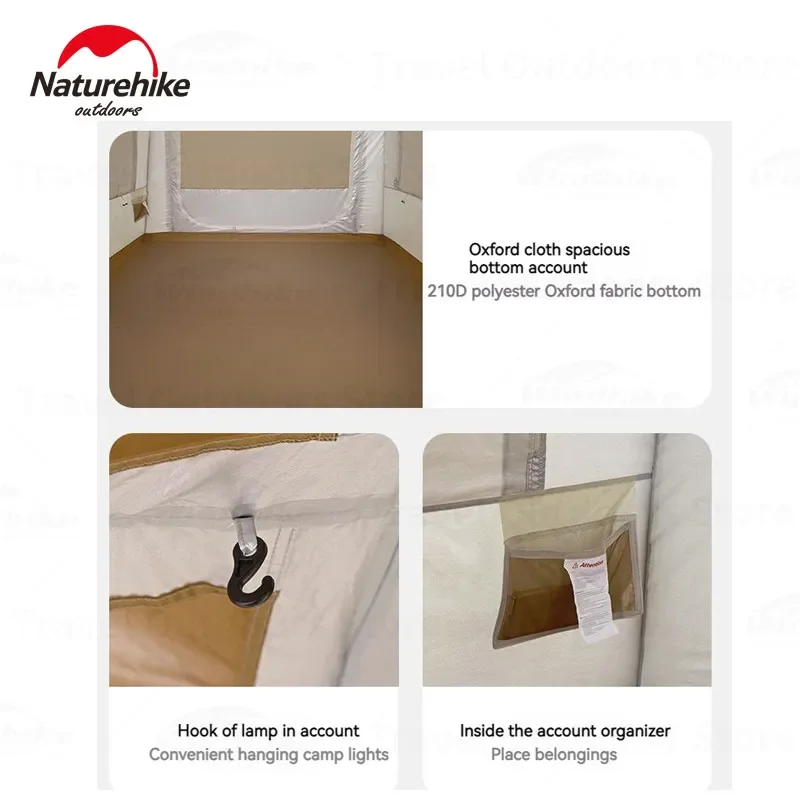
Materials and Construction: What Dome Tents Are Made Of
The performance of a dome tent depends greatly on its materials, with each component serving a specific purpose in the overall structure.
Pole Materials
The framework of a dome tent typically uses one of four main materials:
- Fiberglass – Budget-friendly but heavier and less durable, suitable for occasional camping
- Aluminum Alloy – Excellent strength-to-weight ratio, the standard for quality backpacking tents
- Carbon Fiber – Ultra-lightweight and strong but expensive, found in premium models
- Steel – Used mainly in larger event or basecamp domes where weight isn’t a concern
Understanding which most durable tent materials suit your needs helps balance weight, strength, and cost considerations.
Fabric Components
Dome tents typically feature several fabric elements:
- Rainfly – Usually polyester or nylon with polyurethane or silicone waterproof coatings
- Inner Tent – Lightweight nylon or polyester, often with mesh panels for ventilation
- Groundsheet – Heavier, more abrasion-resistant material with higher waterproof rating
- Vestibule – Same material as rainfly, creates protected storage space
Waterproof ratings (measured in millimeters of hydrostatic head) typically range from 1,000mm for light use to 5,000mm or more for extreme conditions. Higher numbers indicate better water resistance.
Connection Components
The connecting elements of a dome tent are critical to its structural integrity:
- Hubs – Central connection points where multiple poles meet (in advanced designs)
- Clips or Sleeves – Attach the tent body to the poles (clips are faster, sleeves stronger)
- Grommets – Reinforced holes at tent corners where pole ends insert
- Guy Line Attachments – Reinforced points where stabilizing cords attach
Material quality directly affects a tent’s weight, durability, weather resistance, and price. Premium tents use higher-grade components throughout, resulting in longer lifespan and better performance in challenging conditions.
Advantages of Dome Tent Structures: Why They’re Popular
Dome tents have become the go-to choice for many outdoor enthusiasts for several compelling reasons:
Superior Wind Resistance
The aerodynamic curved surface of dome tents allows wind to flow around rather than against the structure. With properly tensioned guy lines, dome tents can withstand winds of 30-50 mph (48-80 km/h), with geodesic designs handling even stronger gusts. Understanding what makes tents windproof reveals why dome designs excel in breezy conditions.
Excellent Weather Protection
The rounded shape naturally sheds rain and snow, preventing accumulation that could collapse the structure. Water runs down and away from the tent rather than pooling, while snow slides off rather than building up. This self-clearing design helps dome tents perform well in various precipitation conditions.
Strength-to-Weight Efficiency
Dome designs create remarkably strong structures with minimal materials. By distributing forces throughout the entire structure, dome tents achieve stability without excessive weight—a crucial advantage for backpackers and hikers who must carry their shelter.
Setup Simplicity
Most dome tents feature intuitive designs with color-coded poles and attachment points. A basic two-pole dome can be set up by one person in under 5 minutes, with even complex geodesic models requiring only moderate practice to master assembly.
Versatile Positioning
The freestanding nature of dome tents allows for placement on surfaces where staking is difficult or impossible, such as rock, sand, or wooden platforms. The tent can be set up, then lifted and repositioned to find the perfect spot.
Interior Space Utilization
While dome tents do have sloping walls, their central height provides usable space where it matters most. The curved walls create more headroom than many other lightweight tent designs, allowing occupants to sit up comfortably in the center.
Recognizable Aesthetics
The distinctive shape of dome tents has become iconic in camping imagery. Their appealing, modern look combines form and function in a design that’s both practical and visually pleasing.
Limitations to Consider: Potential Drawbacks
While dome tents offer numerous advantages, they aren’t perfect for every situation. Understanding their limitations helps campers make informed decisions:
Usable Space Constraints
Though dome tents provide excellent interior volume, the sloping walls reduce usable floor space compared to cabin-style tents with vertical walls. Taller campers may find they can only sit upright in the center area, with progressively less headroom toward the edges.
Ventilation Challenges
Basic dome designs sometimes struggle with condensation management, particularly in humid or cold conditions. Without proper ventilation features like high-low vents or mesh panels, moisture from breathing and body heat can accumulate inside the tent.
Weight Considerations for Backpacking
While dome tents offer good strength-to-weight ratios, they’re typically heavier than minimalist designs like ultralight trekking pole tents. A standard two-person dome typically weighs 4-7 pounds (1.8-3.2 kg), which may be more than dedicated backpackers prefer for long-distance hiking.
Setup Complexity in Advanced Designs
While basic domes are straightforward to pitch, geodesic models with 5+ poles can present a learning curve. The increased complexity offers superior stability but requires more time and practice to master assembly, especially in challenging conditions.
Limited Vestibule Space
Many basic dome tents offer minimal covered storage space outside the sleeping area. This can be problematic during extended rainy periods when gear storage and protected cooking areas become essential.
Cost Factors
Quality dome tents, particularly those with advanced pole systems and premium materials, often command higher prices than simpler tent designs. Our waterproof camping tent collection offers options across various price points to balance cost with performance.
Most of these limitations can be addressed through careful selection or modifications. For example, larger vestibules can be added to some models, and ventilation can be improved through strategic door and window positioning.
Applications and Use Cases: Where Dome Tents Excel
Dome tents demonstrate remarkable versatility across numerous camping scenarios and environments, making them suitable for a wide range of outdoor activities:
Recreational Camping
For weekend warriors and family campers, dome tents provide an excellent balance of comfort, setup simplicity, and weather protection. Their freestanding nature makes them perfect for established campgrounds where level ground is available but soil conditions may vary. The interior height allows for comfortable changing and organizing gear.
Backpacking and Wilderness Exploration
When venturing farther from established campgrounds, the dome tent’s combination of stability and reasonable weight makes it a reliable companion. Three-season dome tents strike an effective balance between protection and portability for multi-day hikes through varied terrain.
Mountaineering and Extreme Conditions
In challenging alpine environments, geodesic dome tents truly shine. Their ability to withstand high winds and shed snow loads makes them the preferred shelter for expeditions to places like Mount Everest base camp and other extreme environments. Heavy-duty 4-season tents with robust dome structures provide crucial protection when elements are at their worst.
Base Camps
For extended stays in one location, larger dome tents create comfortable living spaces that stand up to prolonged exposure to elements. Their superior stability means less worry during overnight storms when you can’t monitor conditions.
Emergency Shelters
The quick setup and reliable protection of dome tents make them valuable for emergency response scenarios and disaster relief. Their freestanding nature allows deployment on various surfaces without requiring perfect staking conditions.
Specialized Applications
Beyond traditional camping, dome structures have found homes in glamping setups, scientific field stations, and even event spaces. Larger-scale dome structures using the same engineering principles create unique spaces for everything from wilderness luxury accommodations to temporary event venues.
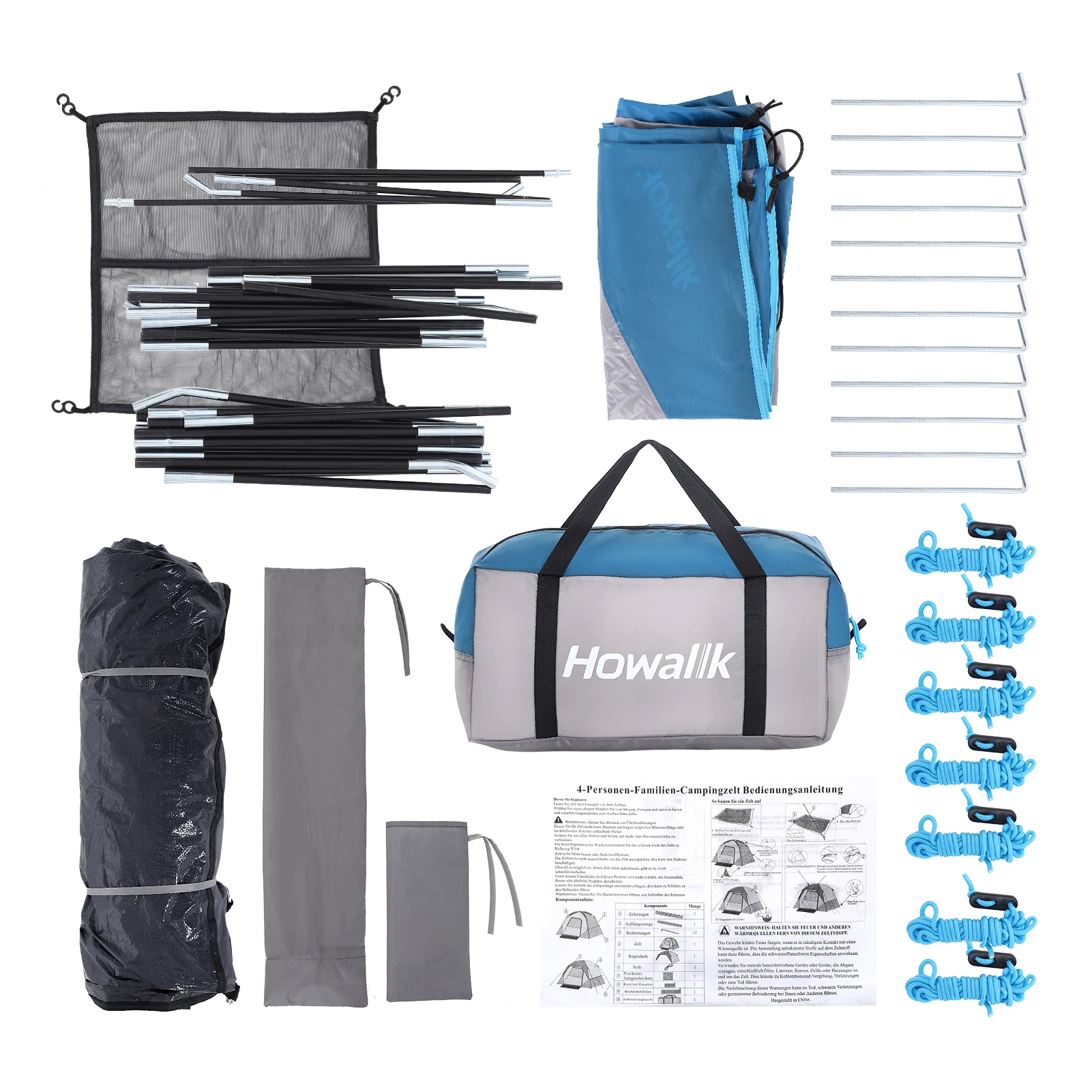
Selecting the Right Dome Tent: Key Considerations
Choosing the perfect dome tent requires balancing several factors against your specific needs and conditions:
Capacity and Sizing
Tent capacity ratings typically represent the maximum number of people who can sleep shoulder-to-shoulder. For comfort, consider sizing up—a 3-person tent often provides ideal space for 2 people plus gear. The dome tent capacity guide helps match tent dimensions to your specific needs.
Environmental Conditions
Consider where and when you’ll be camping:
* 2-season tents work for warm, fair weather
* 3-season tents handle spring through fall conditions
* 4-season tents provide protection in winter and harsh environments
Weight and Portability
If you’re carrying your tent long distances, prioritize lightweight models. Ultralight dome tents balance weight reduction with necessary protection. Car campers can opt for heavier, more feature-rich options without penalty.
Setup Complexity
Be honest about your experience level and typical camping scenarios. If you often set up camp after dark or in poor weather, simpler designs with intuitive assembly may be worth prioritizing over tents with complex pole structures.
Material Quality
Higher-quality materials generally mean longer lifespan and better performance in challenging conditions. Entry-level dome tents ($50-$150) offer basic protection, mid-range options ($150-$300) provide better durability and features, while premium models ($300+) deliver exceptional performance in extreme conditions.
Ventilation Requirements
Consider your typical camping climate. Hot, humid environments require excellent ventilation with multiple mesh panels and windows, while cold-weather camping demands adjustable venting that can be closed completely when needed.
Heavy Duty 4 Season Tent, Mountaineering Tent, Winter Camping Tent
$870.40 Select options This product has multiple variants. The options may be chosen on the product pageCompact Backpacking Tent, Lightweight Backpacking Tent, Waterproof Camping Tent
$335.52 Select options This product has multiple variants. The options may be chosen on the product pageUltralight Backpacking Tent, Ultralight Dome Tent, Winter Camping Tent
Price range: $369.63 through $370.07 Select options This product has multiple variants. The options may be chosen on the product pageCamping Tent with Vestibule, Waterproof Camping Tent
Price range: $407.89 through $479.48 Select options This product has multiple variants. The options may be chosen on the product pageHeavy Duty 4 Season Tent, Ultralight Freestanding Tent, Winter Camping Tent
$3,722.66 Select options This product has multiple variants. The options may be chosen on the product pageBackpacking Tent with Vestibule, Trekking Pole Backpacking Tent, Waterproof Camping Tent
Price range: $271.99 through $519.52 Select options This product has multiple variants. The options may be chosen on the product page
Proper Setup and Care: Maximizing Your Dome Tent’s Performance
Proper setup and maintenance significantly extend your dome tent’s lifespan while ensuring it performs at its best when you need it most.
Site Selection Best Practices
* Choose level ground whenever possible
* Remove rocks, sticks, and other sharp objects from the tent footprint
* Avoid depressions where water might collect during rain
* Consider natural windbreaks in breezy conditions
* Position the door away from prevailing winds
Basic Setup Sequence
1. Lay out the tent body flat on your selected site
2. Assemble poles according to manufacturer instructions
3. Insert poles through sleeves or attach with clips
4. Raise the structure by securing pole ends to corner grommets
5. Stake out the corners for stability
6. Apply the rainfly (if separate) and adjust for even tension
7. Secure additional guy lines as needed
Common Setup Mistakes
* Forcing poles into position rather than allowing them to flex naturally
* Inadequate staking, particularly in windy conditions
* Uneven tension causing stress on fabric and seams
* Incorrect rainfly orientation (most are designed with a specific front/back)
Weather-Specific Adjustments
* For rain: Tighten guy lines and ensure the rainfly doesn’t touch the inner tent
* For wind: Use all guy line attachment points and position the lowest profile end toward the wind
* For hot weather: Maximize ventilation by opening vents and using doors as awnings
Maintenance Essentials
* Always dry completely before storage to prevent mold and mildew
* Clean with mild soap and water only (no harsh detergents)
* Store loosely in a cool, dry place rather than tightly compressed
* Periodically check and reseal seams as needed
With proper care, quality dome tents can provide reliable service for many years of adventure.
How Dome Tents Compare: Alternative Tent Structures
While dome tents offer excellent all-around performance, other tent designs excel in specific scenarios. Understanding these alternatives helps determine when a dome might—or might not—be the ideal choice.
Dome vs. Cabin Tents
Cabin tents feature near-vertical walls that maximize interior space and standing room. While they offer superior livable space and room-like interiors, they sacrifice wind resistance and generally require more setup time. Cabin designs excel for family car camping but aren’t suitable for exposed or windy conditions where dome tents thrive.
Dome vs. Tunnel Tents
Tunnel tents use parallel hoops to create elongated structures with excellent space efficiency and good wind resistance when properly oriented. While not freestanding like domes, they typically offer more floor space for their weight. Tunnel designs work well for backpacking groups who need to maximize sleeping space but require more careful site selection and staking.
Dome vs. A-Frame/Ridge Tents
Traditional A-frame designs use a simple ridge pole with sloping sides. While this classic design has largely been replaced by more modern options, it offers simplicity and reliability with minimal parts that could fail. A-frames provide less usable space than comparable dome tents but can be lighter and simpler to pitch in some cases.
Dome vs. Pyramid/Teepee Tents
Single-pole pyramid tents offer excellent storm resistance and remarkable weight savings. Modern pyramids and teepees can be extremely lightweight while handling serious weather. However, they typically require a center pole that intrudes on interior space and aren’t freestanding like dome designs. Comparing instant dome tents to these alternatives shows the tradeoffs between setup speed and other features.
Each design represents a different set of priorities and compromises. The dome tent’s popularity stems from its balanced approach to common camping needs, but specialized designs may better serve specific requirements.
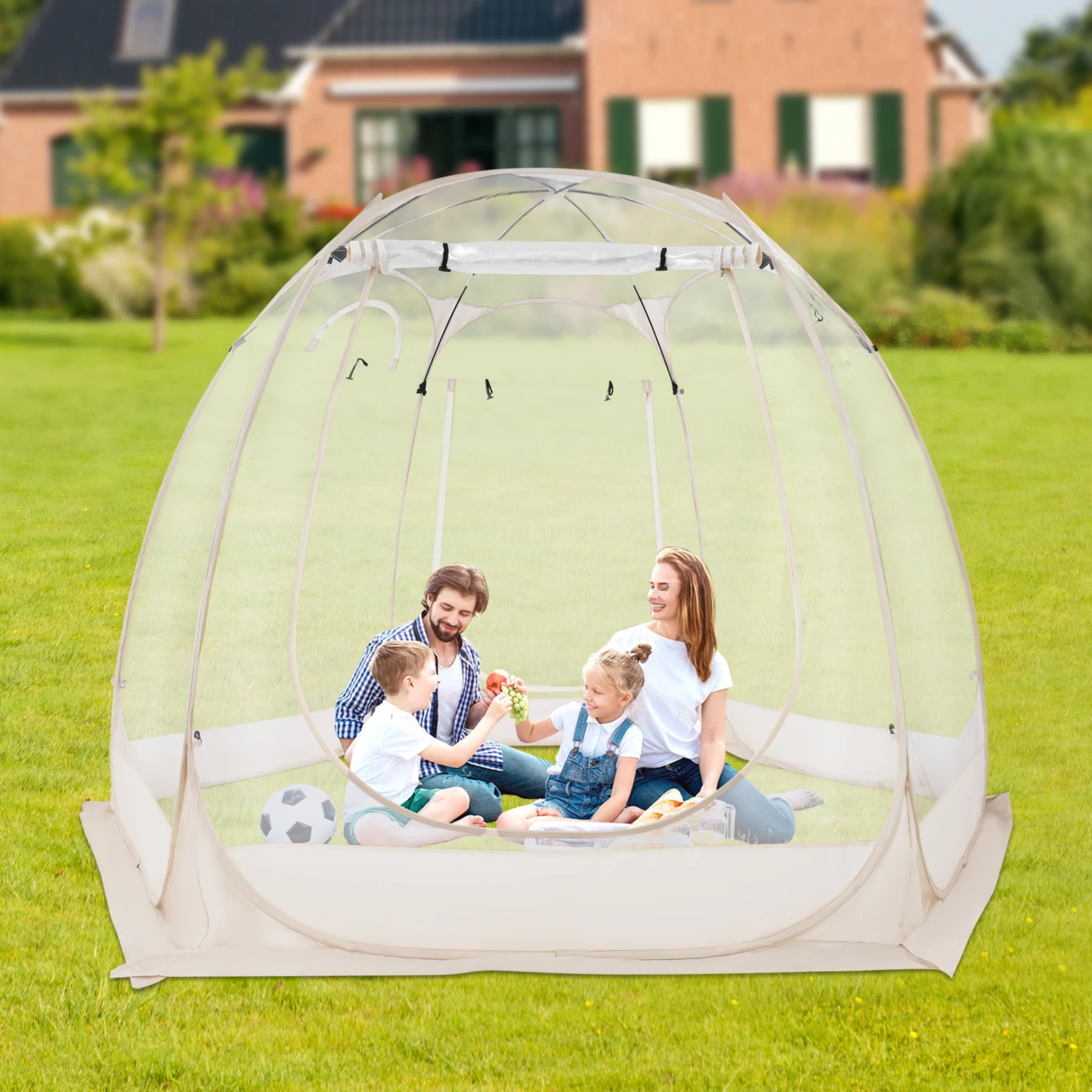
Innovations in Dome Tent Design: Modern Developments
The basic dome tent concept continues to evolve through material advances and creative engineering, resulting in shelters that are lighter, stronger, and more versatile than ever before.
Advanced Materials
Ultra-lightweight fabrics using ripstop nylon with silicone impregnation (often called silnylon) have dramatically reduced tent weight while maintaining or improving strength. Similarly, carbon fiber and aluminum alloy poles have become increasingly lighter while maintaining structural integrity. These material advances allow today’s dome tents to weigh 30-40% less than comparable models from just a decade ago.
Structural Innovations
Modern hub systems have revolutionized pole connections, creating more stable intersections and simplifying setup. Quick-clip attachments have largely replaced the pole sleeves of earlier designs, making assembly faster and repairs simpler. These innovations are particularly evident in pop-up dome tent designs that deploy almost instantly.
Environmental Adaptations
Today’s dome tents increasingly incorporate sustainable materials and manufacturing processes. Some premium models now feature integrated solar panels for power generation, while improved insulation technologies enhance comfort in both hot and cold conditions. Recycled fabrics and PFC-free waterproofing treatments represent the industry’s response to environmental concerns.
Hybrid Designs
Perhaps the most interesting development is the emergence of hybrid structures that combine dome elements with other tent types. Dome-tunnel hybrids offer the stability of geodesic designs with the expanded living space of tunnel tents. Similarly, dome-cabin hybrids attempt to create more vertical walls while maintaining the wind-shedding benefits of curved surfaces.
As outdoor activities continue to diversify and specialize, dome tent innovations increasingly target specific use cases rather than pursuing one-size-fits-all solutions. This specialization allows campers to select shelters precisely matched to their outdoor pursuits.
Frequently Asked Questions About Dome Tents
How waterproof are dome tents?
Most quality dome tents feature waterproof ratings between 1,500mm and 5,000mm hydrostatic head, making them capable of handling sustained rainfall. Their curved design naturally sheds water, enhancing their weather resistance beyond what the fabric rating alone might suggest.
What’s the difference between standard and geodesic dome tents?
Standard dome tents typically use 2-3 poles that cross at the center, while geodesic designs incorporate 5 or more poles with multiple crossing points. The additional pole crossings in geodesic domes create a network of triangles that significantly increases stability in high winds and under snow loads.
How much interior space can I expect in a dome tent?
A typical 2-person dome tent offers 28-35 square feet (2.6-3.2 square meters) of floor space with center heights ranging from 38-48 inches (97-122 cm). The usable space feels most spacious in the center and diminishes toward the sloping walls.
Can one person set up a dome tent alone?
Yes, most dome tents are designed for single-person setup. Basic 2-3 pole designs are particularly easy for one person to assemble, while more complex geodesic models may present more of a challenge but remain manageable with practice.
How do I manage condensation in a dome tent?
Proper ventilation is key—use all available vents, particularly those creating high-low airflow. Leave a gap in doors or windows when weather permits, and avoid bringing wet gear inside. Double-wall dome tents with separate rainflies manage condensation more effectively than single-wall designs.
How long should a quality dome tent last with proper care?
With proper maintenance, a good quality dome tent should last 5-10 years of regular use. Premium models may last even longer, while budget options might need replacement after 2-3 seasons. UV exposure typically degrades tent materials before physical wear occurs, so storing your tent out of sunlight when not in use significantly extends its lifespan.

